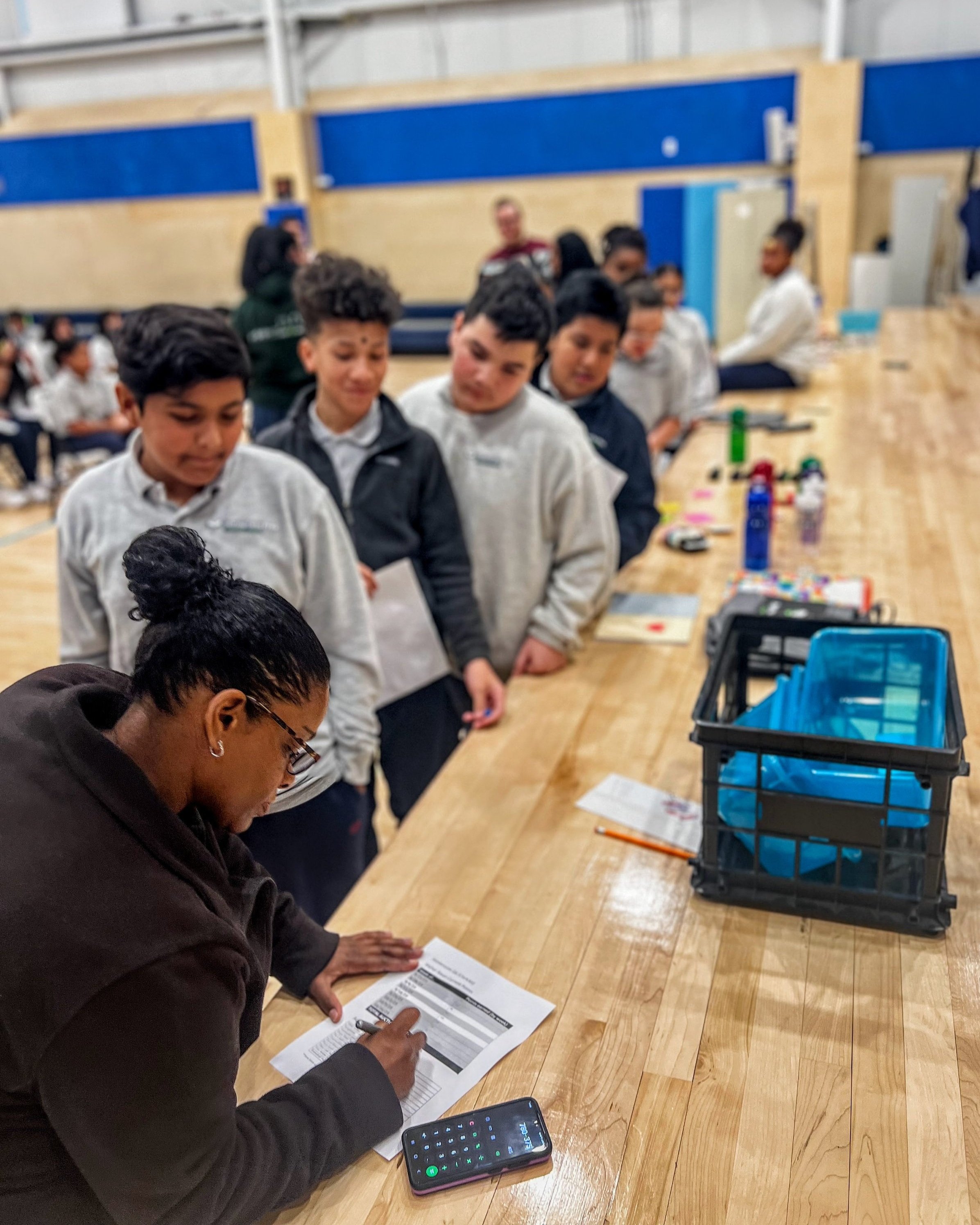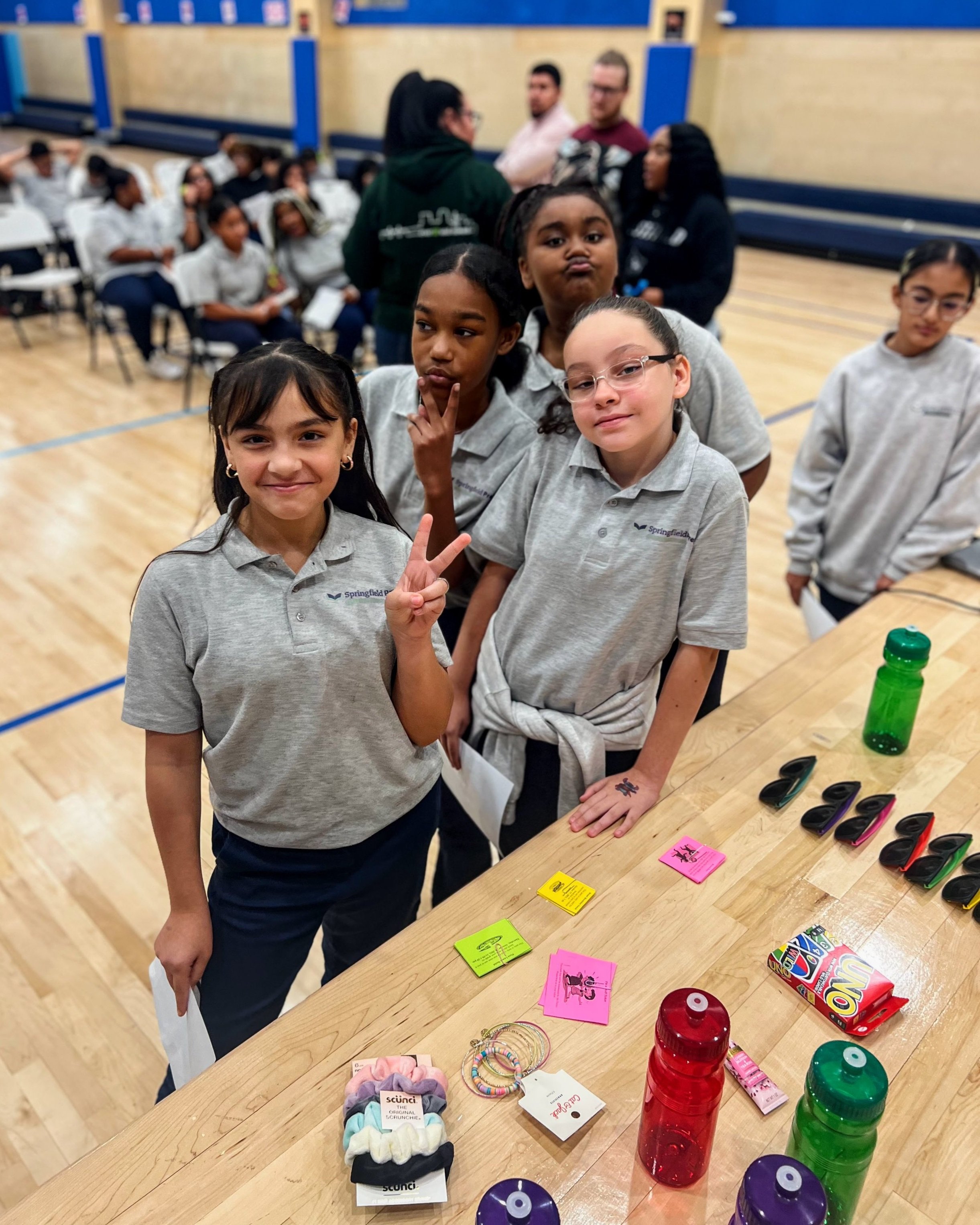Building a Middle School in a Post-Pandemic World
Middle School Principal, Christine Torres,
Working with middle schoolers has always had its challenges – yet, in recent years, this work has become increasingly difficult. The impacts of remote learning and increased social media use in teens may have made reaching middle schoolers the hardest it’s ever been.
In the fall of 2021, we began the return to in-person learning, as well as the roll-out of our middle school structure. As Assistant Principal, at the time, I did a lot of thinking about how students were going to be impacted by this complex transition. They’d be nervous about the return to the classroom, seeing their peers in person again, all while experiencing the developmental anxieties that traditionally impact scholars at this age.
We knew we had to build a culture and structure informed by the unique challenges facing adolescents today; one that would allow students to feel seen, supported, and - upon graduating - prepared for their futures. While daunting, it pushed us to approach what’s always been difficult with renewed commitment.
Three critical pillars that became key factors in developing our middle school:
1) Students Must Drive Academic Discourse
During remote learning, we saw a decrease in academic discourse and participation; Zoom proved to be a daunting learning environment for students, as they seemed to develop an increased self-awareness of how their peers were perceiving them.
Since returning to in-person learning, we’ve had to really push our scholars to participate in verbal discussions in class and engage in conversations with one another rather than just responding to their teacher.
As our students progress through middle school, there are increased opportunities for students to drive their learning. The goal is that, by eighth grade, our scholars are leading their classroom discussions, and teachers seldom step in to facilitate. Slowly but surely, we’ve been able to bring back that academic discourse that was missing during remote learning, proving the value of sticking to this focus.
2) Student Achievement Must be Celebrated
When we take the time to acknowledge who our students are and what interests them, only then are we truly able to reach them. By incorporating their unique interests wherever possible, whether through curriculum, incentives systems, and opportunities outside of the classroom, we’re able to motivate and engage our scholars in a whole new way.




I think we need to be attuned to the fact that being a middle schooler right now is very different from when many of today’s educators and leaders were in middle school. It's important for us to acknowledge that times change and that staying relevant in the ways that we motivate students to be excited about their learning is key. We still believe in consistency, holding high expectations, and encouraging students to show up as their best selves, AND we know we can do all of that best when our scholars have fully bought into learning.
3) Student-Teacher Relationships are Critical to Outcomes
When teens are just trying to figure out who they are and where they fit in, it is incredibly important for them to feel like they have an adult at school they can trust. I tell almost everyone, that if you’re going to teach middle school, you can’t just go into it prepared to teach content.
There must be intentionality around getting to know your scholars and building relationships with them. This includes EVERY student - not just the extroverts, or the students who are actively participating and succeeding academically. This means also building relationships with the students who are more reserved, introverted, or who may be struggling with peer relationships or academics. Those students also need an adult they can trust.
For educators, this may mean going the extra mile at times but it's work that needs to be done when you are truly committed to the success of all students. When things are trickier in the classroom, or when a student is struggling behaviorally, our team may take a step back and consider if building a better relationship with this student could lead to improved behavior and getting them back on track.
How Does Social Media Play A Role?
Social media, unlimited access to the internet, and unlimited access to one another has played a huge role in how things have evolved culturally. There may be some benefits, but evidently, there are a lot more challenges when it comes to giving early adolescents that kind of access. We’re having a lot of conversations with our middle schoolers when it comes to the things they are doing and saying in online spaces because these interactions almost always trickle into the classroom space. And, it becomes an even greater concern, when the things happening online are having a negative impact on the social-emotional well-being of our scholars.
I’ve had to have many more conversations around social media use in the last few years, urging our scholars to think about the impact their online choices can have on themselves, their peers, and even life opportunities. The things they post online can be permanent, and helping kids to understand the permanence, and potential harm of social media is critical.
Was I having these conversations when I first started teaching? No. But, given that social media has become such a massive influencer of culture, largely changing the way middle schoolers interact, as educators, we must develop and enforce policies to help guide their understanding and use of that space.
What do you hope to be true for all Springfield Prep scholars?
I hope that our students leave Springfield Prep feeling prepared to advocate for themselves as they navigate the challenges and opportunities ahead. We’re always asking our students about their needs, and how we can best support them - in hopes that when the time comes, they’ll be able to advocate for themselves. Whether they’ve moved on to a high school much larger than Springfield Prep, or are navigating a difficult set of circumstances, I hope we’ve given them the tools, preparation, and confidence to know they can succeed.


